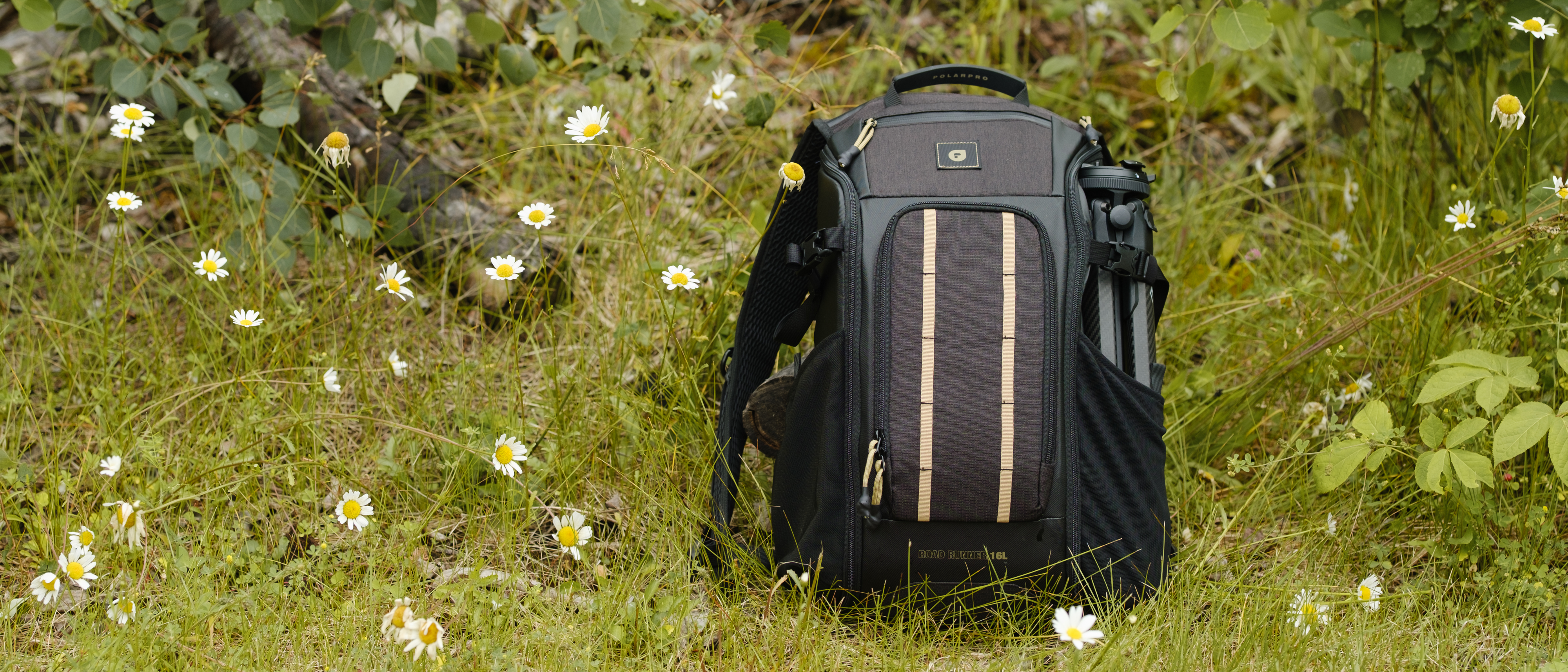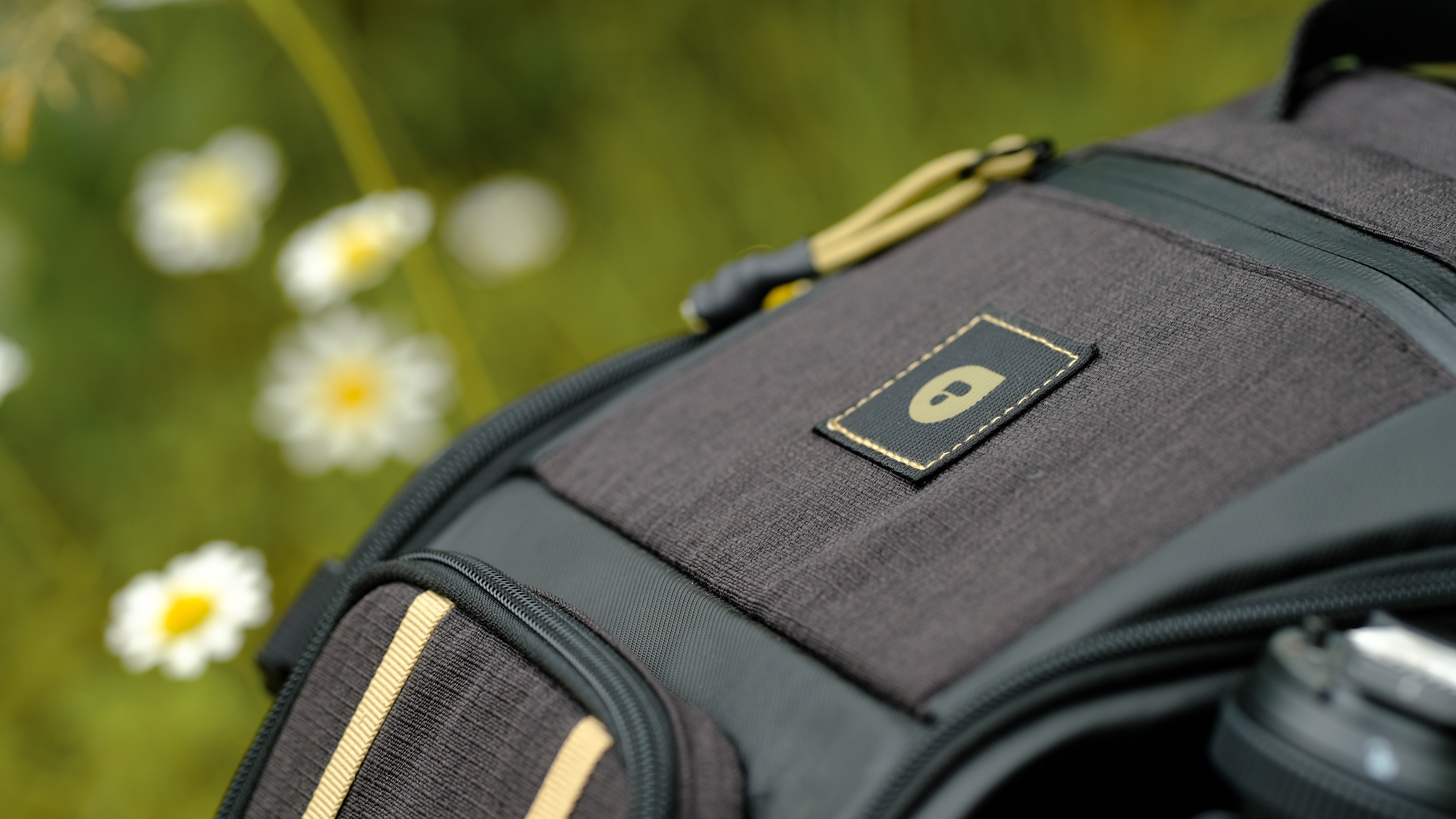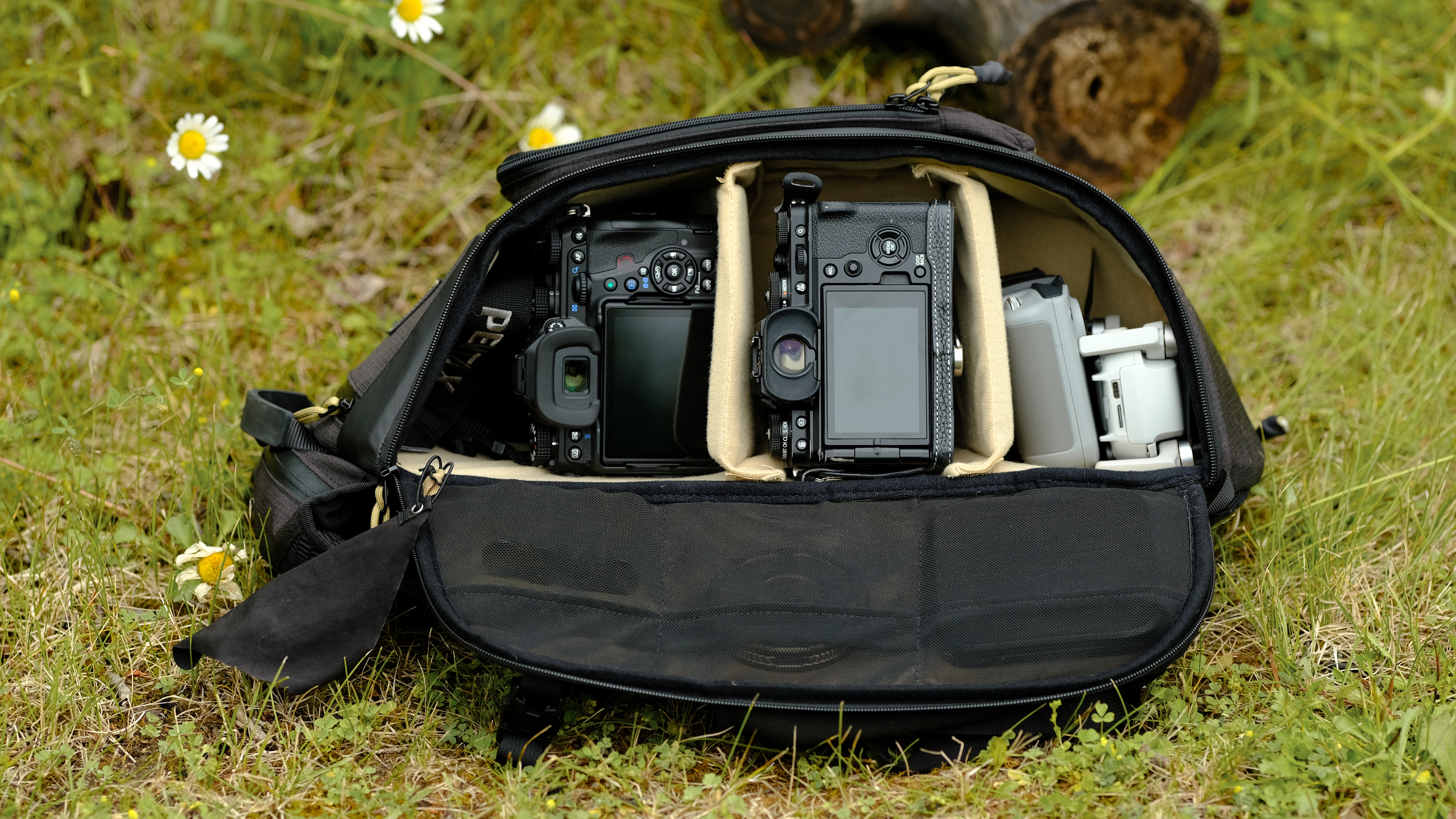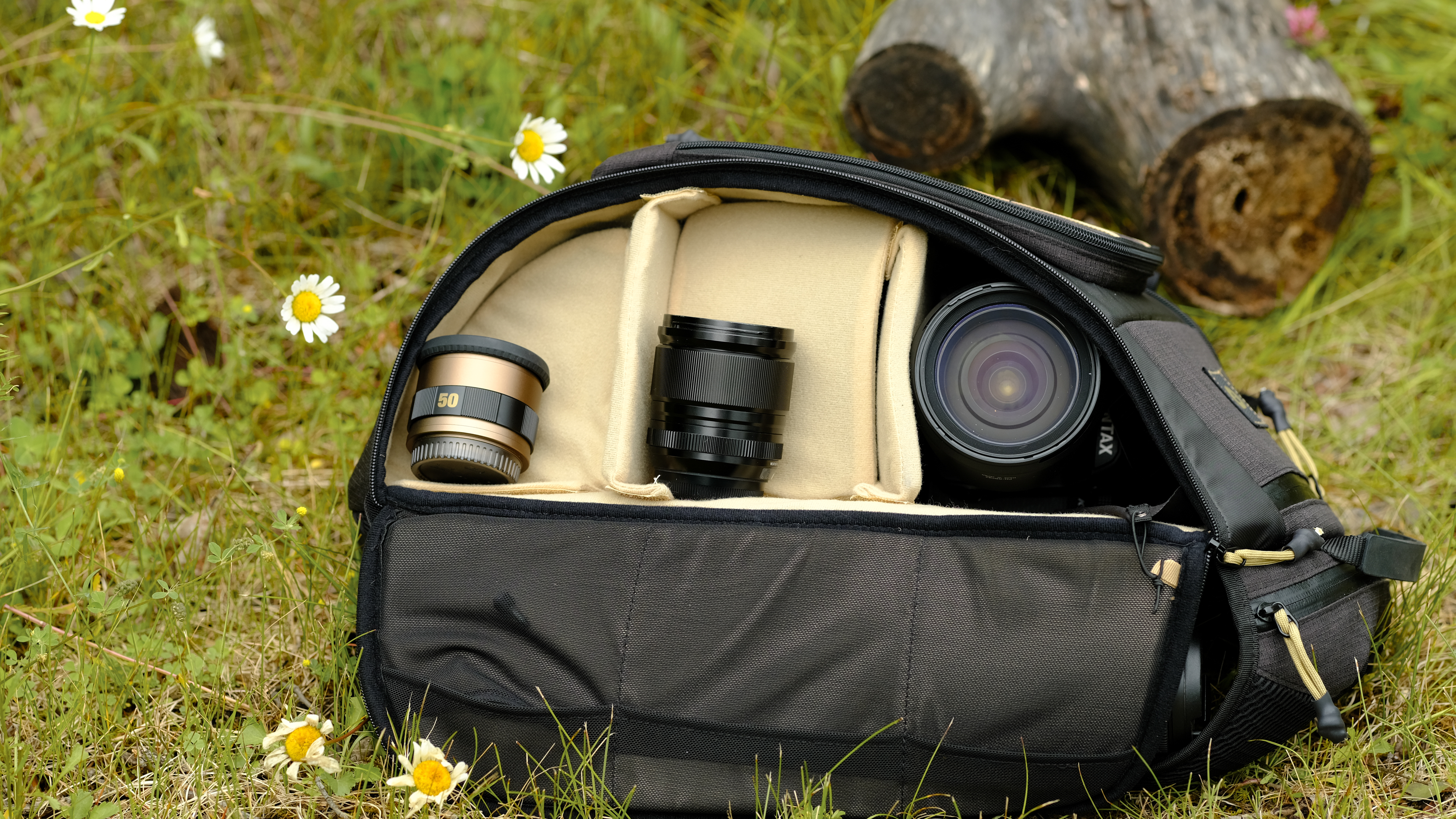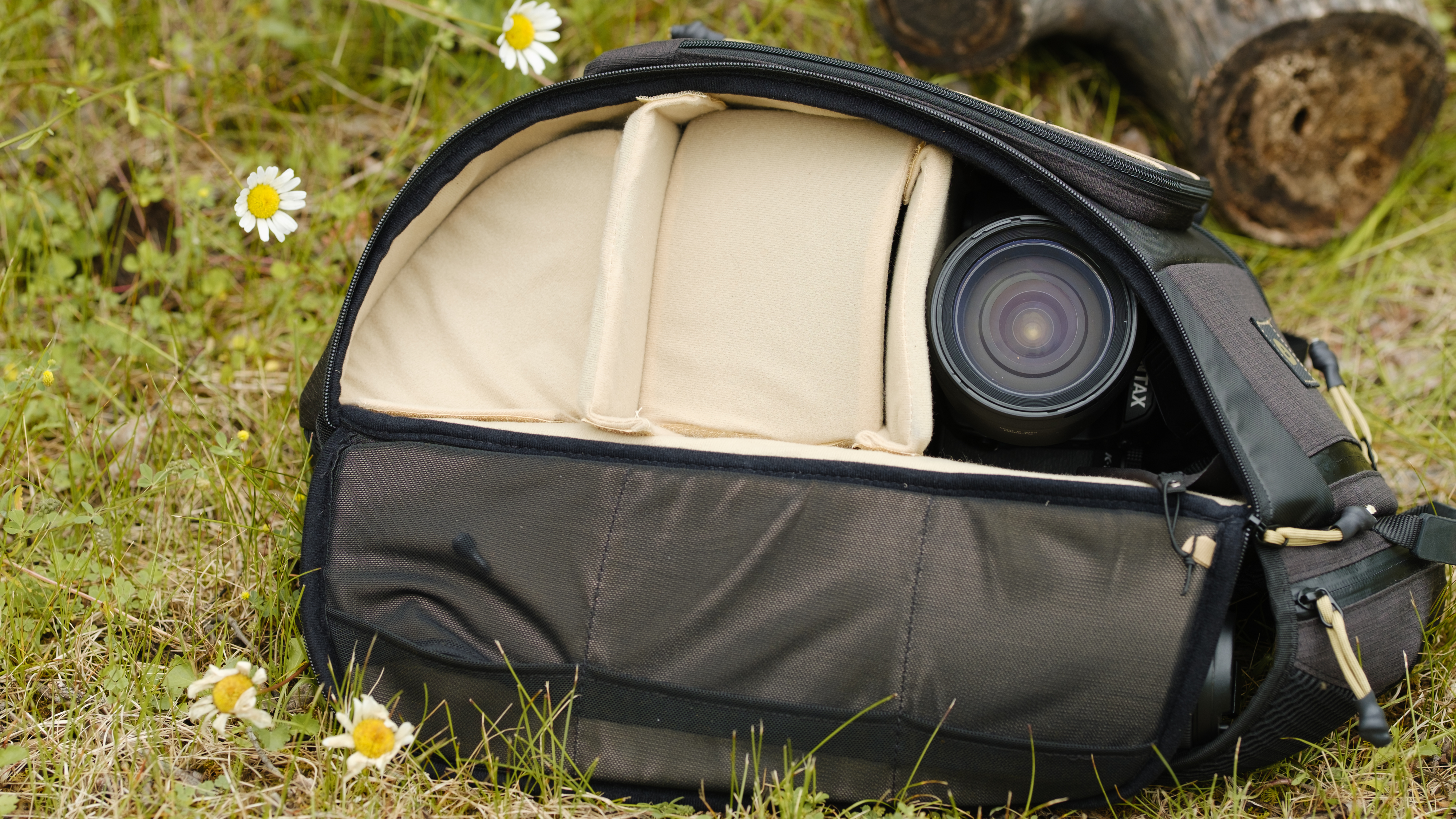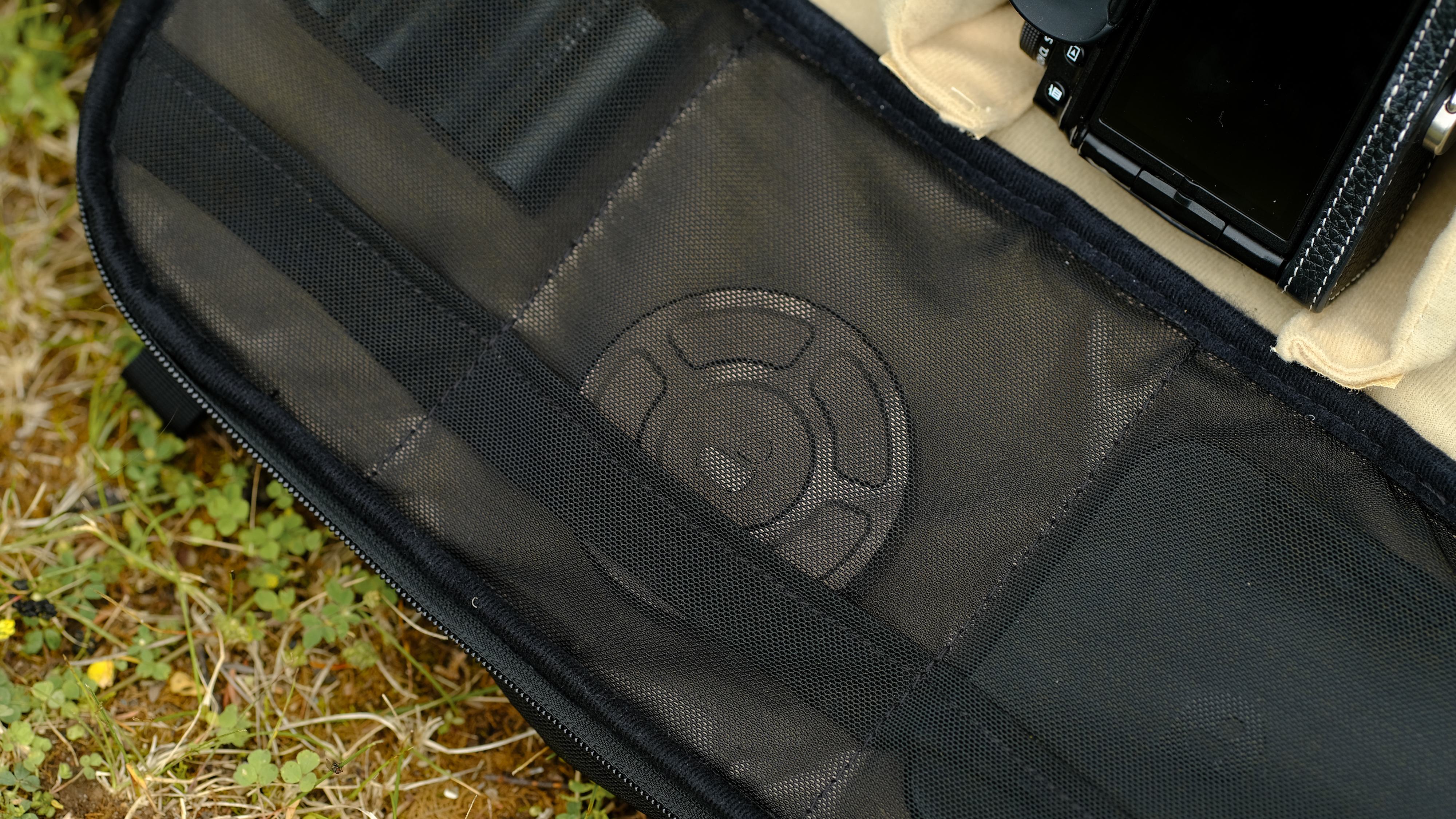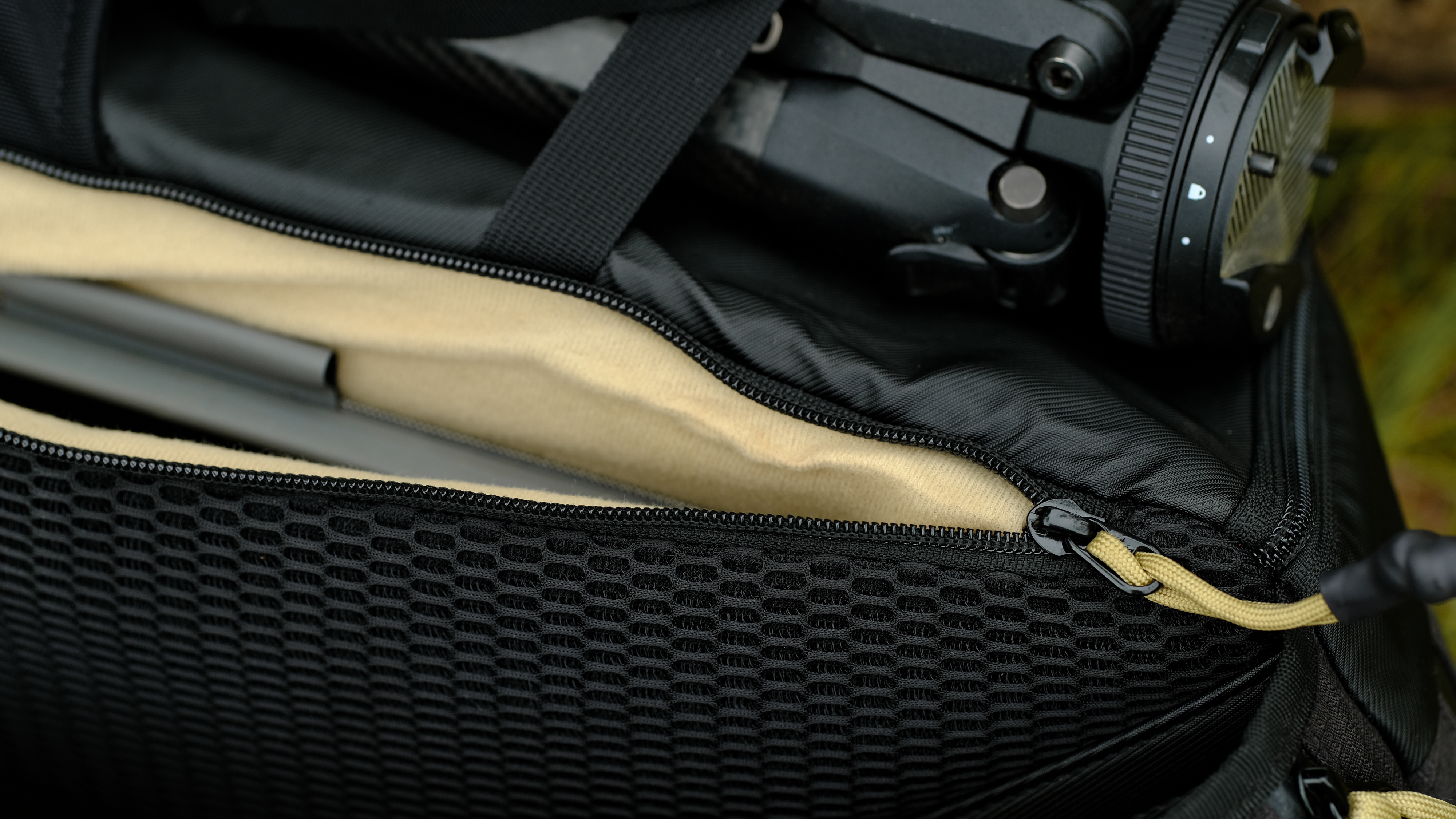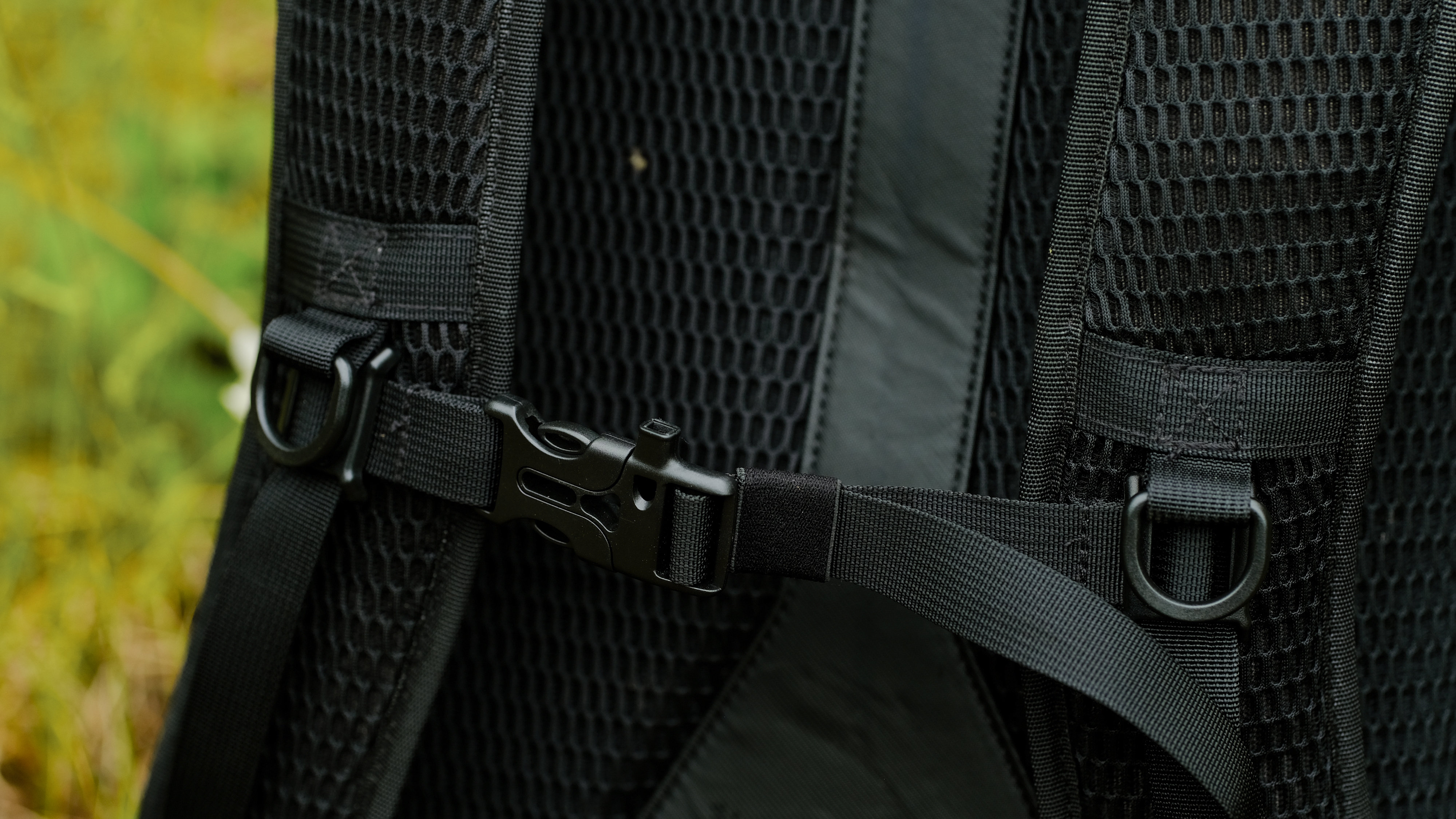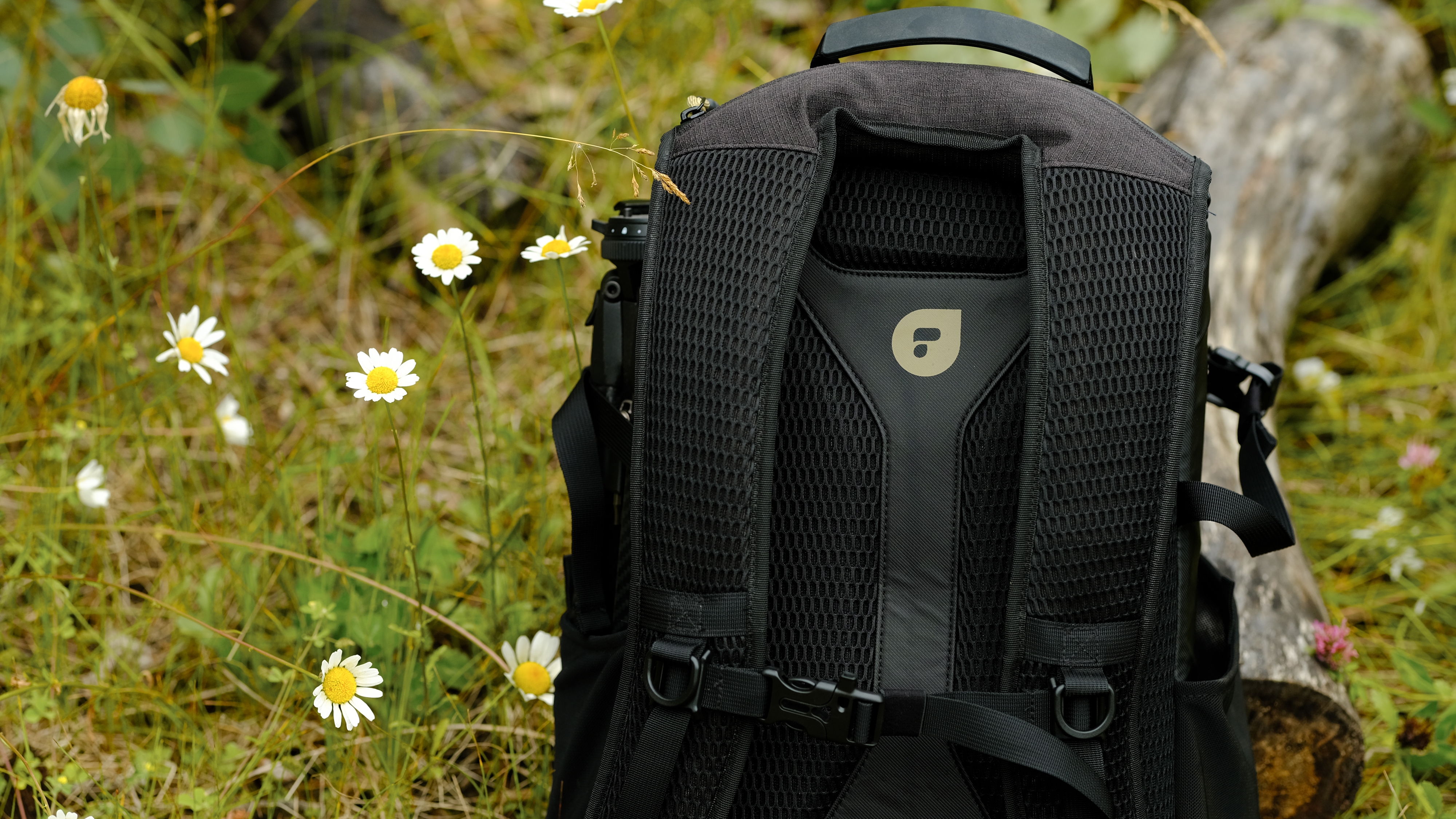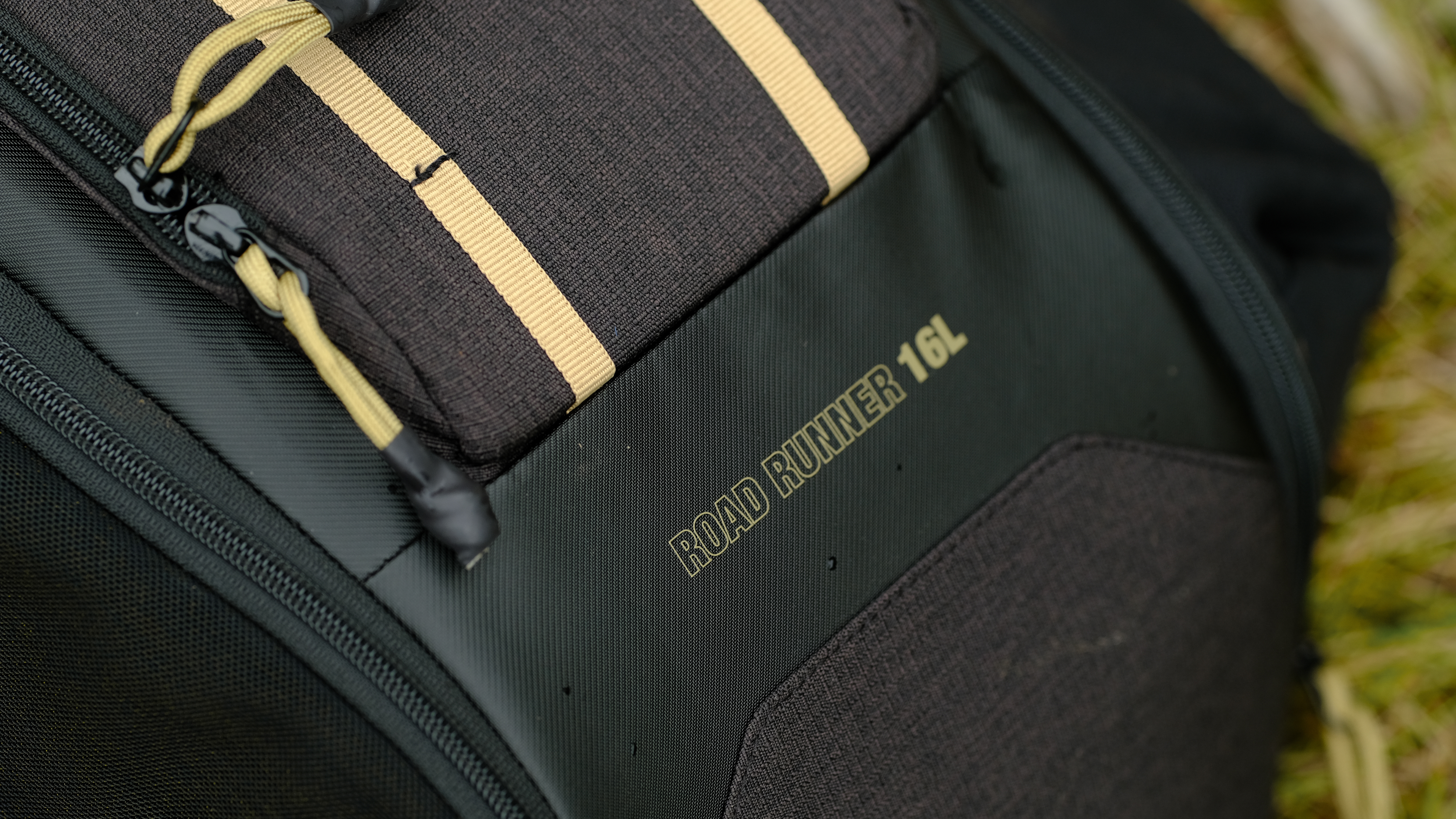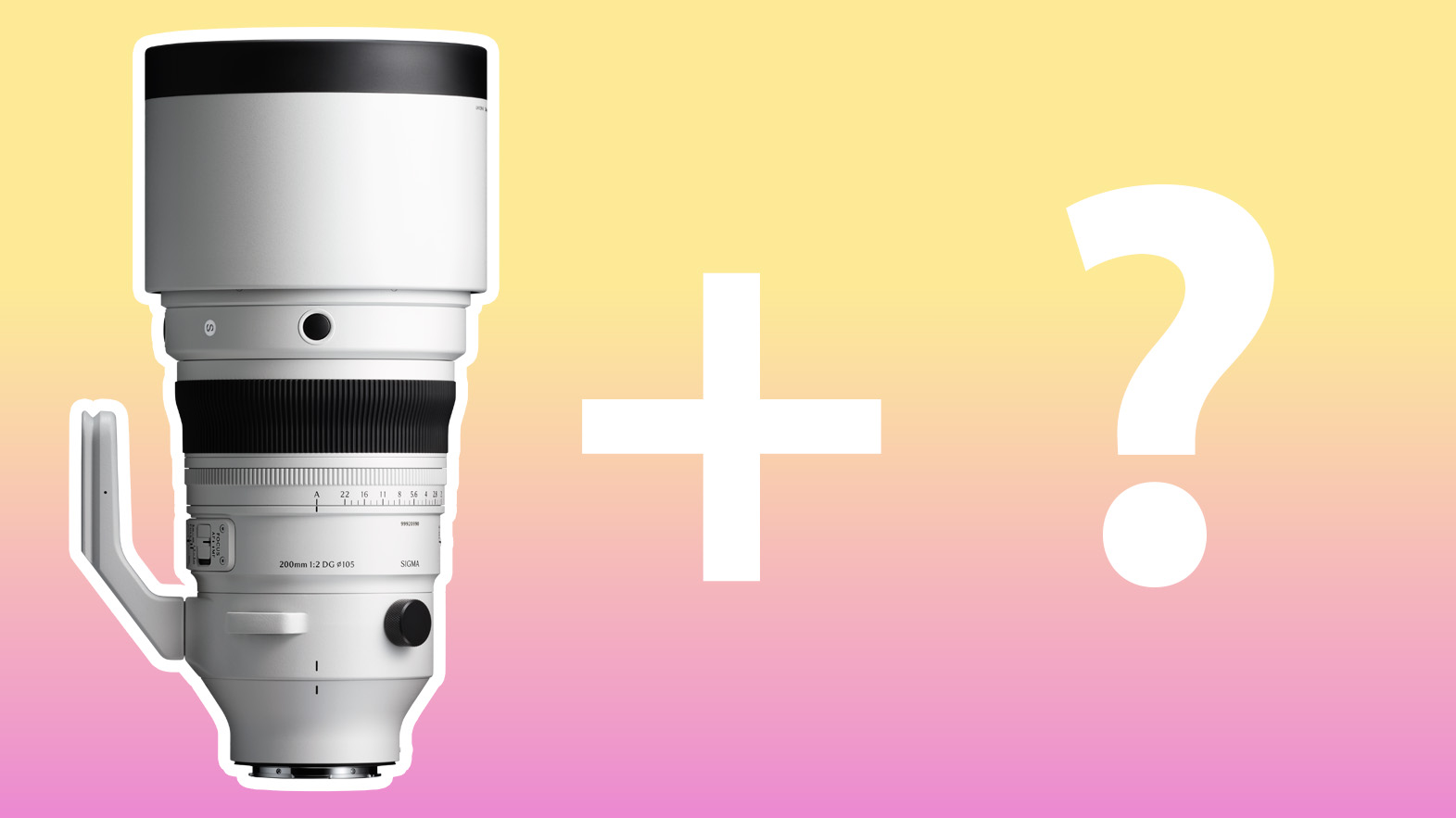Digital Camera World Verdict
The PolarPro RoadRunner 16L is a comfortable camera backpack with quick access to gear from both sides, without completely removing the bag. The bag is well-made and comfortable. My biggest issue is that the dividers don't accommodate small prime lenses well, but it's an excellent option for kits with mid-sized lenses.
Pros
- +
Dual side access
- +
Access to gear without removing the bag
- +
Lightweight
- +
Well-made
- +
Comfortable
Cons
- -
Limited divider organization
- -
Not made for small primes or super large telephotos
Why you can trust Digital Camera World
There’s one question that I always ask before buying a camera backpack: Can I access my gear without sitting my bag down in the dirt? With the new PolarPro RoadRunner 16L camera backpack, the answer isn’t just yes, it’s yes, from both sides.
The RoadRunnner 16L is part of PolarPro’s first camera bag line – and it’s an impressively designed bag for the company’s first foray into backpacks. Photographers and content creators have access to gear from either side by simply removing one strap and slinging the bag around towards the front.
The lightweight bag weighs just 2.93 pounds, yet uses a variety of different materials to look a bit more than a basic black bag. The lightweight build and well-padded straps also helps make the bag comfortable for longer treks.
While I loved the dual access and comfortable design, it brings with it an unusual interior organization. This is how the new PolarPro RoadRunner 16L backpack stacks up.
PolarPro RoadRunner 16L: Specifications
Exterior main material | 600d ripstop nylon |
Interior material | Microfiber |
Exterior dimensions | 11’’ x 9’’ x 20” |
Interior dimensions | 10”x 6” x 18.5” |
Weight | 1337g |
Zippers | YKK with paracord pull tabs |
PolarPro RoadRunner 16L: Price
The PolarPro RoadRunner 16L retails for $179.99 / £179 / AU$289
If you don’t need 16L of space, PolarPro also has an 8L version of the RoadRunner, which retails for $139.99 / £139 / AU$219.
PolarPro RoadRunner 16L: Design & Handling
One of the first things that I noticed when pulling the PolarPro RoadRunner 16L out of the box is how lightweight it is. Granted, a lot of the weight from a camera bag comes from the gear itself, but high-end materials can quickly make a camera bag feel heavy even empty. The RoadRunner 16L weighs 2.93 lbs / 1337g unpacked.
The best camera deals, reviews, product advice, and unmissable photography news, direct to your inbox!
One of the reasons that the bag is so lightweight is that the RoadRunner is also a narrower bag. But besides keeping the weight low, this allows for gear access from either side of the camera bag. (Lefties, rejoice!)
Both side panels unzip fully, clamshell style, to reveal what’s inside. Depending on the size of the gear, this means that some lenses and cameras can be grabbed from either side. The bag does include two middle dividers that will protect a shorter lens or smaller camera body, but with this in place, the gear needs to be accessed from the side that which it’s stored on.
The gear compartment is built-in (rather than the camera bags that have a separate camera cube for an additional cost), but the dividers are adjustable to the size of your kit. The main gear compartment is split into three main sections with adjustable dividers that essentially stack gear vertically inside the backpack. Two additional dividers included with the bag can be used to split two of those three compartments if needed.
While I like that the RoadRunner backpack can be accessed from either side, the horizontal division of the main gear compartment limits what fits more than the traditional backpack dividers.
I liked this set-up for stashing cameras with attached lenses, but it doesn’t really work for storing small, unattached primes. I couldn’t find a spot for my smaller prime lenses. There’s a divider to split those three stacked compartments, but it was still too roomy and would have left a lot of room for the smaller lens to bounce around. A prime lens should fill out most of the bag’s six-inch depth to fit snugly with the extra divider. Yes, the 8L version of this bag will probably fit primes a little better, but my go-to bag will fit both large and tiny prime lenses inside the custom dividers.
The RoadRunner 16L comfortably fits mid-sized lenses. I was also able to stack my DJI Mini drone and controller in one compartment (though I suspect the 8L version of this bag would be a better fit for the Mini series and the 16L for Air and larger drones).
The interior of the bag makes the three slots only about 10 inches long, so the bag also isn’t made for the largest telephotos. It’s a great bag for fitting cameras with attached lenses, mid-sized lenses, and drones, but it’s not an ideal pick for photographers with either tiny prime lenses or beefy telephotos.
Inside the side openings, the bag has sleeves sized for filters and other small accessories, with three of these pockets on each side for a total of six. I was hoping that one of the first bags from PolarPro, a company that’s known for its lens filters, would have plenty of filter storage, and I wasn’t disappointed here. I also loved that there are two lens cloths attached to each of the main openings (because the only thing I lose almost as often as lens caps is lens cloths).
Besides the filter pockets on the inside of the main compartment, there’s a slim zippered compartment on the front, which opens up to reveal three more mesh pockets. A smaller zip at the top front has a key leash, and a discrete zipper in the back panel opens to accommodate an 11-inch tablet. A rain cover is tucked into a zippered compartment at the top of the straps.
Both side openings have large mesh pockets that can hold a water bottle, or with the help of the top strap, a tripod or gimbal. Having one of these pockets on both sides means I could carry both a water bottle and a tripod at the same time, because it’s never fun to choose between hydration or stabilization.
The backpack’s straps are well-padded and use mesh for ventilation. Like all mesh straps, I think they do chafe a bit against bare skin, but that’s not an issue unless you’re wearing a tank top and exposing bare skin to the straps.
The bag also has two latch points at the straps, as well as a series of loops on the front pocket for attachments. The buckle on the chest strap even has an emergency whistle.
While the RoadRunner is a black camera bag, the use of a range of different textures and materials makes the bag feel a little less boring than a straightforward nylon bag. The bag is made with a mix of nylon and a smoother material that almost looks like leather from a distance (it’s not). The mesh on the side pockets even has a subtle bit of gold-colored sheen if you look closely enough.
Despite being a compact bag, I didn’t find too many features missing. There’s no waist strap, but this is less of a necessity on smaller bags that aren’t designed to carry the largest, heaviest lenses. There’s no luggage pass through to situate the backpack on top of a roller bag either.
PolarPro RoadRunner 16L: Performance
I have a tendency to overpack, which is what first grabbed my attention about the RoadRunner series – it’s made for minimal gear carry, but still fairly roomy for bringing more than just one camera and a lens along.
I packed the RoadRunner full with a DSLR and 24-70mm f/2.8 lens, a mirrorless camera and 50mm lens, a DJI Mini drone and controller, an iPad, and the Peak Design Travel Tripod. Despite having all that gear packed inside, when I first slung it on my back, it still felt quite lightweight, in part because of the bag’s lighter weight and the minimalist design that’s not meant to carry loads of gear.
Then, I hiked with the RoadRunner for more than a mile and didn’t experience anything more than the minor soreness that comes with wearing gear on your back (rather than hiking bag-free). I’m a petite person, and I liked how the narrower backpack fit my frame.
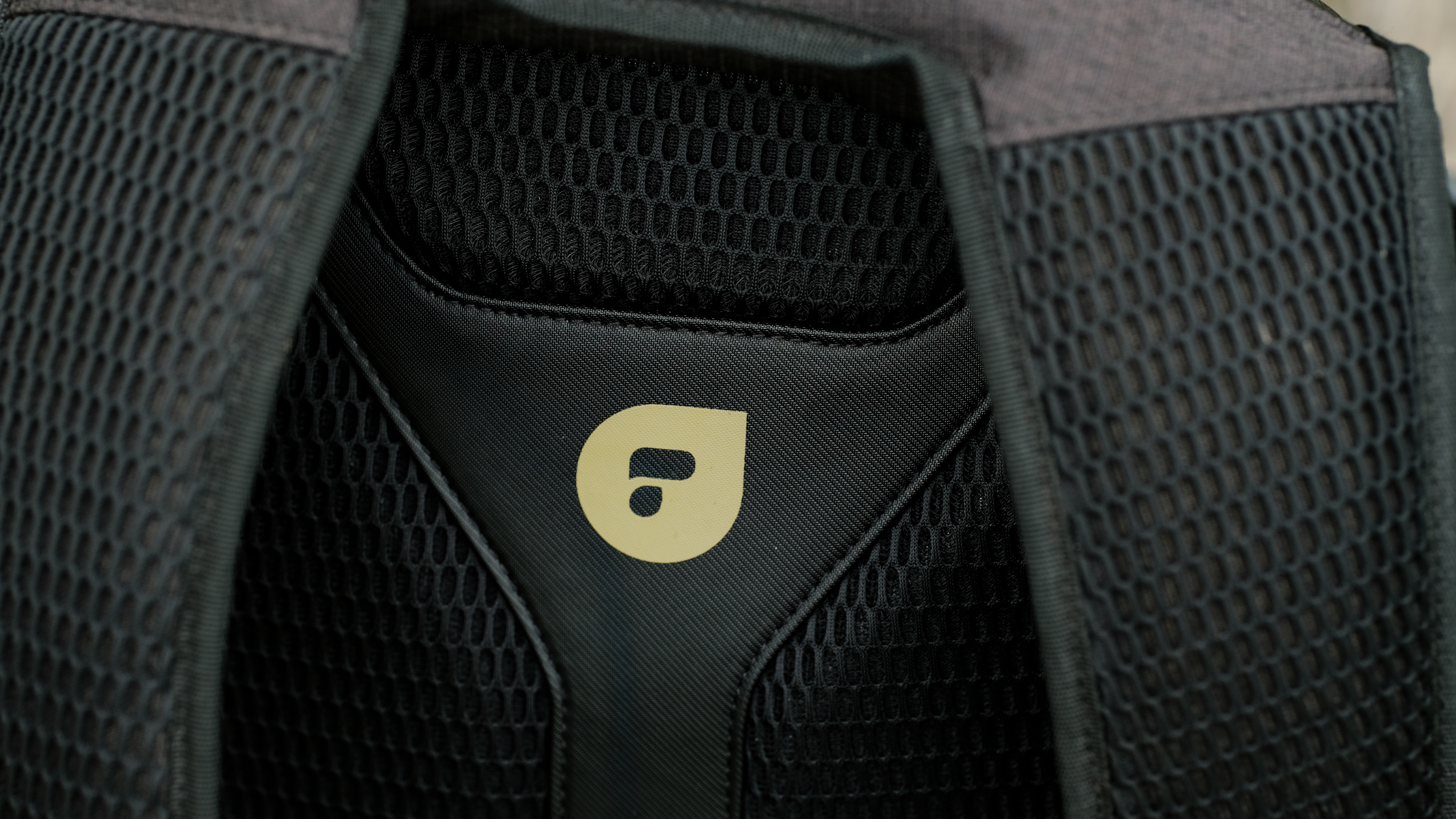
The straps on the RoadRunner are well-padded, and the adjustable chest strap helps keep them in place. There’s also enough padding in the back panel that I barely noticed that an iPad was tucked just on the other side of the back padding.
I suspect the bag will become even more comfortable with time, as the straps wear in and become a bit less stiff, but even as a new, unworn bag, it’s a pretty comfortable backpack. The only thing I found a bit uncomfortable is that the mesh on the straps can chafe against bare skin, but to be fair, I have yet to find a camera backpack that’s still comfortable on bare skin when wearing a tank top in the summer heat.
I love camera backpacks that allow me to access my gear without placing the bag in the dirt, and the RoadRunner definitely delivers. I could remove one strap, sling the bag around to the front, unzip the side panel, and quickly pull out gear. That maneuver is slightly more awkward when a tripod is slotted in the side pocket, but still easily doable.
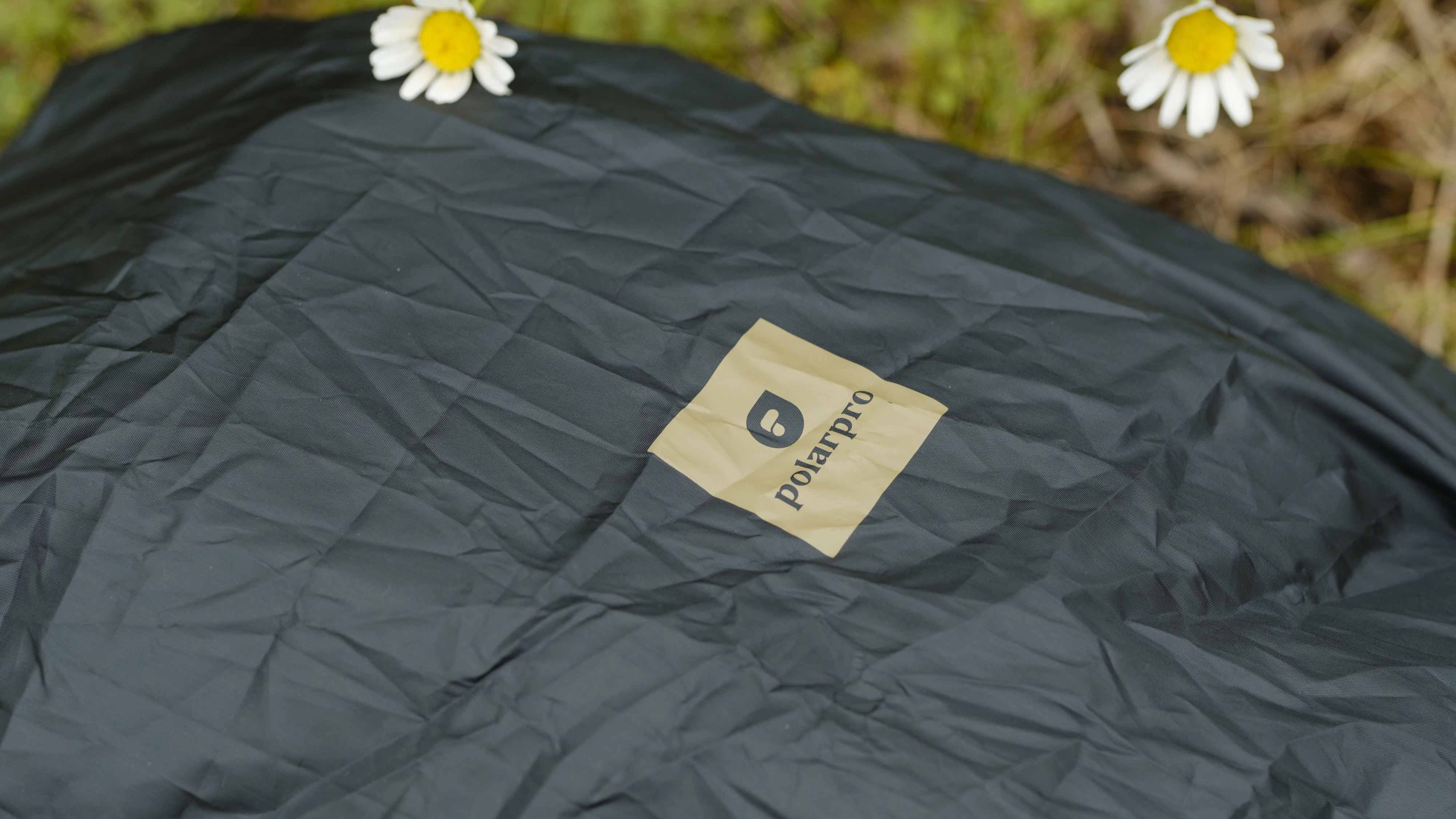
One of the RoadRunner’s top pockets has a weather-sealed zipper, but most zippers have a traditional feel. That’s in part because the built-in rainfly is what’s meant to keep gear out of the rain. This cover stretches over everything except for the back panel and straps, which means gear is kept dry, but you’ll have to move it aside to access the main gear compartment or any pockets.
The materials are easy to brush dirt off of. The zippers mostly pull smoothly, although the lining inside the tablet pocket is sometimes loose enough that it can catch inside the zipper and get stuck.
PolarPro RoadRunner 16L: Verdict
The PolarPro RoadRunner 16L is a lightweight, well-made bag that offers quick access to gear from both sides. The camera backpack is a streamlined bag made for minimalists and quick, ambidextrous access to gear. I love being able to remove one strap, swing the bag around, and easily access gear for either side.
The bag is made from durable ripstop nylon, plus there’s a built-in rain cover if rain is in the forecast. The straps are comfortable and the bag’s lighter weight makes it comfortable to hike with.
The interior organization limits what fits inside the bag well, but it’s an excellent bag to carry around a drone and a camera with an attached lens and another mid-sized lens, along with accessories like a tripod and filters. Skip this bag for packing small primes or the biggest telephotos, as the interior organization is a bit limited. But, if you’re looking for a minimalist, lightweight bag that fits a camera with a mid-sized lens attached, an extra mid-sized lens, a drone, and a tripod, then the RoadRunner is worth a look as a well-made, lightweight bag at a reasonable price point.
You may also like
Browse the best camera backpacks or the best camera bags.

With more than a decade of experience writing about cameras and technology, Hillary K. Grigonis leads the US coverage for Digital Camera World. Her work has appeared in Business Insider, Digital Trends, Pocket-lint, Rangefinder, The Phoblographer, and more. Her wedding and portrait photography favors a journalistic style. She’s a former Nikon shooter and a current Fujifilm user, but has tested a wide range of cameras and lenses across multiple brands. Hillary is also a licensed drone pilot.
You must confirm your public display name before commenting
Please logout and then login again, you will then be prompted to enter your display name.
